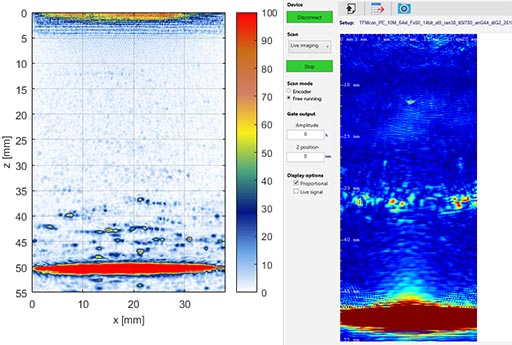HTHA
Accurate detection from the very first stage of the High Temperature Hydrogen Attack (HTHA)
Early detection is the key
At the final stage, the standard techniques detect easily the delamination process, though at the early stage, HTHA results in small clusters of micro defects providing diffuse reflection from ultrasonic energy. Today, standard techniques are only capable of detecting backscattered energy, giving an indirect analysis of the potential defects. Early detection of HTHA can prevent unexpected plant downtime duration, productivity reduction, and even catastrophic damages.

At the final stage, the standard techniques detect easily the delamination process, though at the early stage, HTHA results in small clusters of micro defects providing diffuse reflection from ultrasonic energy. Today, standard techniques are only capable of detecting backscattered energy, giving an indirect analysis of the potential defects. Early detection of HTHA can prevent unexpected plant downtime duration, productivity reduction, and even catastrophic damages.
Since the detection of HTHA is a critical issue, FMC/TFM methods are an excellent technology to perform good characterization, through a relatively easy inspection approach providing accurate results.
Always at the leading edge of new technologies, TPAC has developed an innovative FMC/TFM technique capable of performing real-time inspection that actually exceeds the requirement for detecting HTHA at early stage. TPAC proposes a complete inspection kit based on the Explorer and accompanying software along with the application-specific probe, probe holder and encoder

